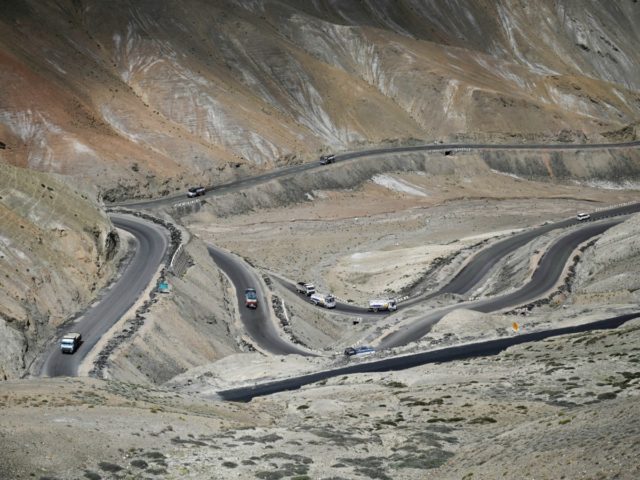The Chinese army has deployed “all-terrain walking excavators” to continue construction work and road-building near China’s disputed Himalayan border with India, the South China Morning Post (SCMP) reported on Thursday.
Known as spider excavators, the heavy machines are seen in the background of a video showing Chinese army soldiers on the Tibetan Plateau near the Brahmaputra River, a trans-boundary river flowing through China, India, and Bangladesh. The footage was released last week by China’s People’s Liberation Army (PLA) Tibet Military District, which manages the country’s shared border region with India.
“With four hydraulic legs on tires and two sawtooth extensions, the excavators can stand and step over obstacles, walk across ditches and streams, and climb and work on near-vertical terrain,” the SCMP reported. “The PLA uses two models made by state-owned firm XCMG Construction Machinery in Jiangsu province – one that weighs 11 tons and can walk at [6.2 mph], and another that can be operated remotely without a driver,” the newspaper wrote, adding that China’s paramilitary People’s Armed Police uses the equipment for emergency rescue operations as well.
In recent years, both China and India have built and expanded infrastructure along their shared border, known as the Line of Actual Control (LAC). The unmarked boundary, spanning 2,167 miles, has caused several border disputes to arise over the past few decades. Most recently, on June 15, a skirmish broke out between Indian and Chinese border regiments stationed in northeastern India’s Galwan Valley, killing 20 Indian soldiers and an estimated 40 Chinese troops. The exact number of Chinese dead remains unconfirmed, as China has refused to officially acknowledge that its army sustained losses in the conflict.
The Himalayan clash was the first deadly military conflict between India and China since 1975. In the weeks leading up to the skirmish, each side accused the other of developing infrastructure projects that violated the shared boundary near the Galwan Valley, causing heightened tensions between the two nations’ armies. These construction projects have continued unabated on the Chinese side, as seen by the PLA’s deployment of spider excavators to the Tibetan Plateau in recent days.

COMMENTS
Please let us know if you're having issues with commenting.